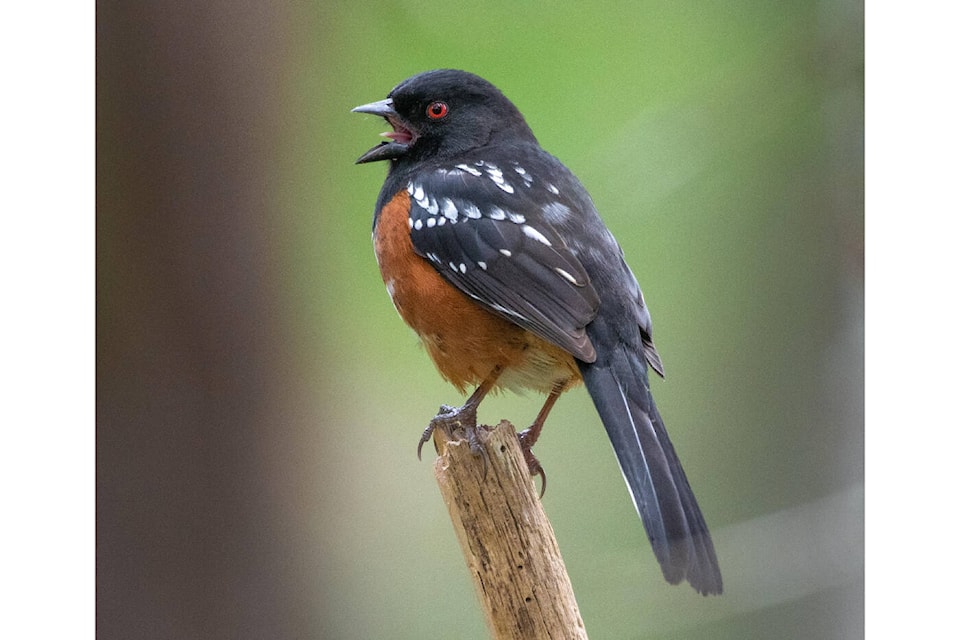By James MacKenzie
Special to Black Press
For many people, the early morning spring chorus of bird song brings feelings of joy and contemplation, but for some: intriguing confusion?
Similar to learning a new language, learning to decipher the colourful wonders singing cryptically in the canopy can unlock an entirely new world full of vireos, flycatchers, warblers and more. But until you tune your ears to the right frequency, you’ll have a better chance of understanding Ave Maria than an avian song.
The first step to learning bird song is practice. Start by learning the songs of local and easy-to-observe birds. Watching a bird sing can forever link the species and song. For example, the joyful proclamation of the song sparrow, the complex musical essays of the Pacific wren, or the ubiquitous whistles of the American robin, often described as ‘cheerily, cheer up, cheer up, cheerily, cheer up.’ A second step is to do just that, create a little ditty or mnemonic device to remember the bird’s call. Some classics include the crow’s “caw caw,” the common yellowthroat’s “Witchety-witchety-witchety-witchety,” and the barred owl’s haunting call and response: “who cooks for you? Who cooks for you all?” Finally, once we’ve decided which bird is cooking dinner, we can turn to technology to help us further.
The wonderful folks at the Cornell Lab of Ornithology have produced an app as magical as its namesake: Merlin Bird ID. In addition to providing range maps and physical ID tips, Merlin Bird ID also has a feature where it can identify the birds singing around you using your smartphone’s microphone. Simply download the (free) app and turn it on as you enjoy your morning coffee and it will provide a real-time list of the birds singing and calling around you. And, as a bonus, if you are hard of hearing, Merlin will pick up those difficult-to-hear high-pitched birds. (I’m looking at you: kinglets and cedar waxwing).
So don’t fret if you feel lost during the dawn chorus. Take it one bird at a time, and before long you won’t be able to turn off the sound ID in your brain
James MacKenzie is the education co-ordinator at the Mountainaire Avian Rescue Society (MARS) Wildlife Rescue Centre
